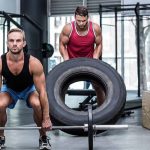Freediving Training and Techniques
Freediving is a great way to explore the underwater world.
It provides the advantage of less gear than scuba diving which allows you to blend in more naturally with marine life, less stress on the body, and access to areas that may be prohibited to scuba divers.
However, you need more than some long fins and a mask and snorkel to get started. It is important to train for safety as well as for improved ability underwater. The first step is to understand how the body adapts mentally and physically under water.
If you’re new to freediving it is generally recommended to train with a certified freediving instructor to learn proper safety and protocols. Before we dive into technique and training we will review the principles of freediving.
When we are submerged underwater the body reacts to the physical and mental stress in dynamic ways that are referred to as mammalian diving reflex. This means that blood is diverted from the limbs and all organs except the heart, brain, and lungs.
This reflex allows us to conserve oxygen. Your body lowers your heart rate and shifts blood flow towards the chest vital organs to protect against pressure increases. The primary principle of freediving is to make this natural reflex stronger by triggering it more frequently.
- This reflex improves naturally overtime as you become more comfortable free diving you become more relaxed underwater, this helps lower your heart rate which in turn conserves oxygen and allows for longer breath holding. However, you can also use training techniques to consciously improve these skills.
- As with many sports having the right gear can help improve your technique. As opposed to scuba diving masks a low volume mask is best for free diving. Long blade fins are also recommended as they help you get deeper while using less energy (and conserving more oxygen).
- It can take some getting used to long blade fins and it is recommended to practice surface swimming and getting accustomed to the longer fins before attempting an open water dive for the first time. Using a weight belt can also be advantageous as this is another aid to go deeper while conserving energy while you’re trying to get down.
- Our bodies are naturally buoyant so we need more assistance getting down then we do coming up to surface. However, just as you should train with your long fins you should train with your weight belt and get accustomed to surface swimming with the extra weight. Notice how it effects your natural buoyancy and don’t go to aggressive with the weight.
- It’s best to start light even 5lbs will make a big difference conserving energy on the way down, but should not cause too much resistance coming back up to surface. You can add more weight as needed once you feel comfortable and safe. You should ALWAYS dive with a buddy that is also trained in the correct freediving safety procedures and is a proficient swimmer.
- In addition to training in the water, having the right gear, and learning all the appropriate safety procedures you should also try adding breathing exercises and cardiovascular activities to your land training. Any type of cardiovascular exercise (running, cycling, aerobics, etc.) practiced for a minimum of 30 min three times a week will help improve your endurance which should lower your resting heart rate.
This is a great way to improve your mammalian reflex. Additionally, having less body fat makes you less buoyant; and having less volume will help you move more gracefully while underwater. So generally keeping fit is an asset to your freediving skills as it gives you an added advantage to help you maximize your time underwater.
It’s a no brainer that breathing exercises will help you with your ability to hold your breath longer. Which is the primary element of freediving. The Expand-A-Lung is a great tool to use for your breathing exercises as it has variable inspiratory and expiratory resistance. In fact the Expand-A-Lung’s inventor Jorge Brouwer is an avid free diver and developed this product specifically to improve his breath holding and freediving.
Training with the Expand-A-Lung strengthens the respiratory muscles which improves your VO2 max and will enable you to hold your breath longer while maintaining a relaxed heart rate.




